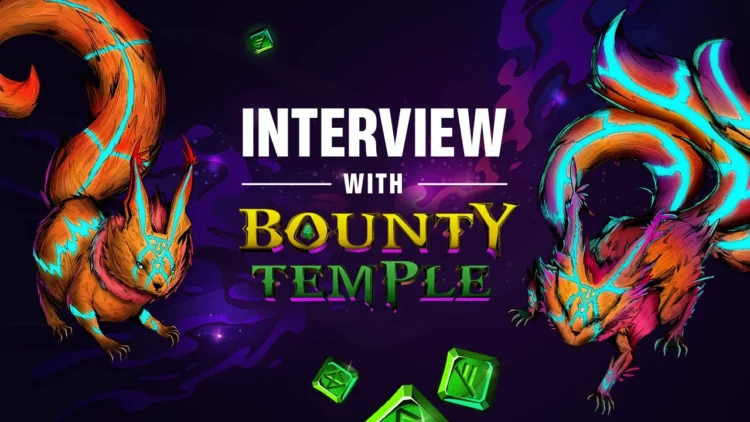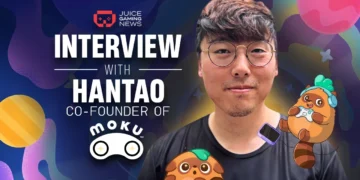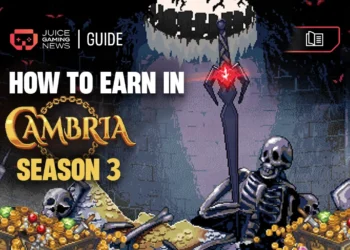Quick Take
- Slot-based raids meet GameFi with village building, PvP, and a casual loop inspired by Coin Master
- $GIA token holds a fixed value, creating a bear-proof economy designed for long-term player earnings
- Crafted NFTs earn passively through trait-based royalties tied to BTM bloodlines and marketplace activity
In a GameFi market cluttered with unsustainable rewards and abandoned roadmaps, Bounty Temple is betting on simplicity and a radically different business model. Built around a low-skill gameplay loop inspired by mobile hits like Coin Master, the game introduces its own stable utility token, a risk-managed economy, and a three-cycle structure designed to reward players without draining liquidity.
“First we identified all the problems in GameFi, and then solved them one by one,” the team told Juice Gaming News. That process led to their P2E-Evolution model, an approach that leans into casual gameplay but builds out long-term reward structures through PvP raids, NFT resource wars, and a uniquely structured token system centered on $GIA.
We spoke with the founders of Bounty Temple about their vision, the mechanics behind their bear-proof model, and why the game’s true value unlocks well after the first spin.
A Slot Machine With Strategy
At the core of Bounty Temple is a simple loop: spin the Bounty Temple Machine (BTM), take an action (attack, defend, raid, loot), earn gold, and use it to build and upgrade your village. Once a village is maxed out, players advance to the next stage, where rewards scale upward.
What starts as a casual spinner quickly branches into more layered systems. “Daily play is easy and relaxing,” they said. “But the weekly Guild Wars require coordination and timing, when to raid, when to burn resources, and when to use your NFT items.”
Guild Wars are the high-stakes battleground of the game. The last guild to hold a castle when the timer ends earns exclusive mining rights to NFT resources for seven days. These items, which have varying drop rates, can be sold on the open market or used for further crafting.
Shooting For a Bear-Proof Design
The game’s ecosystem revolves around $GIA, a proprietary algorithmic stable utility token that keeps its value at $0.10 regardless of market conditions. This structure is meant to ease the kind of player anxiety that plagued earlier GameFi models, where token volatility made long-term engagement risky.
“Players join because of $GIA, but earning is just the beginning,” the team said. “They spend $GIA to craft, upgrade, and compete in tournaments because the end goal is to earn high-value NFT resources. The model is designed to stay stable even when the rest of the market isn’t.”
In their view, it’s not the graphics or marketing that kill GameFi projects, but rather it’s token design. And when token values collapse, so does the incentive to play. “Your game fails if players can’t earn decent money,” they said. “So the business model has to come first.”
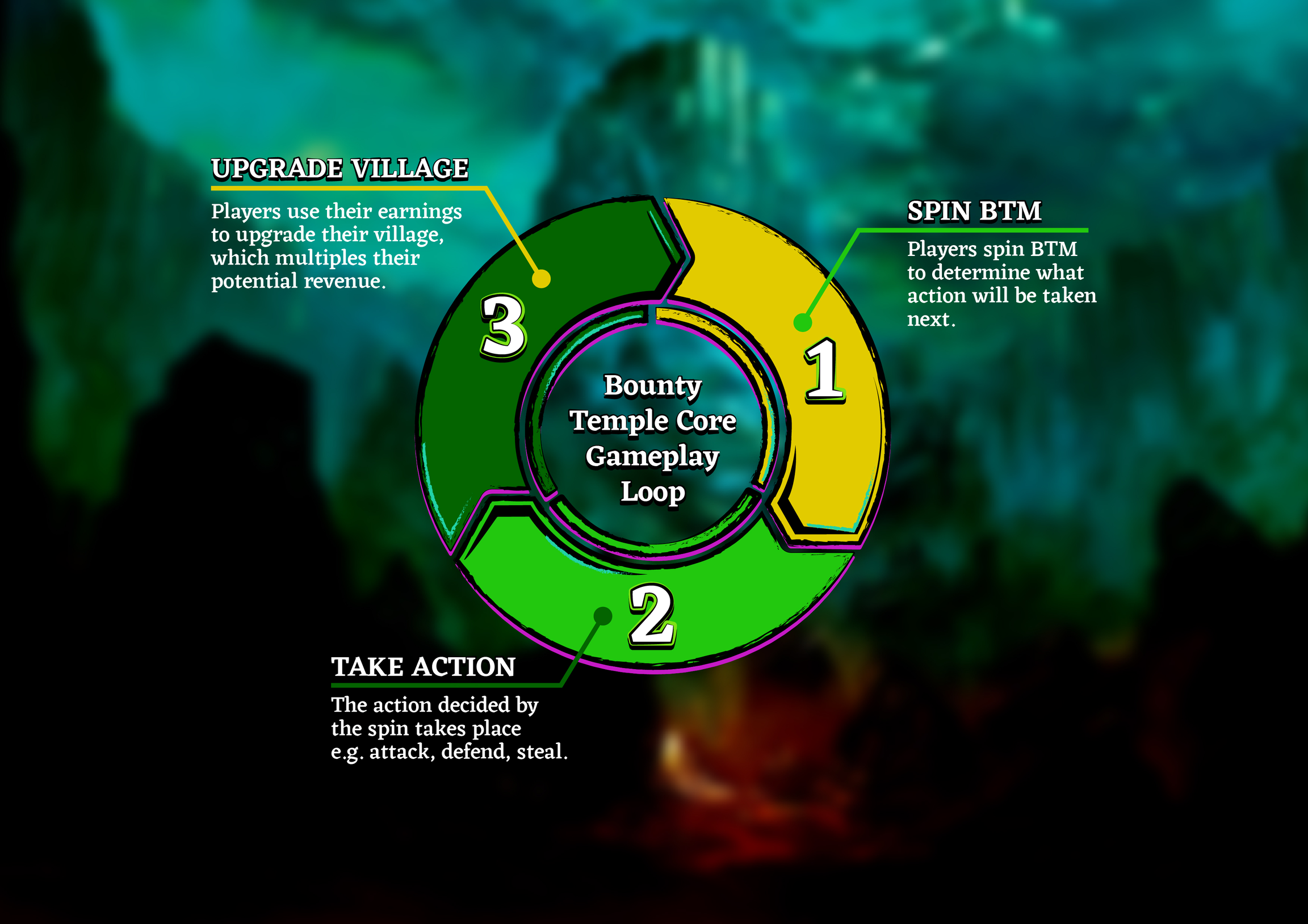
Culture Points and Community Controls
To reinforce healthy behavior, Bounty Temple introduces Culture Points (CP), a 1–10 rating that determines how efficiently a player can mint and earn. Players below a CP of 5 see reduced earnings, while those at 5 or above maintain full rates.
This system is used to weed out bad actors, bots, and passive extractors. “If someone is just sucking liquidity, we know. To keep earning, they have to stay active and keep their CP up.”
Combined with the guild mechanics and trait-based NFT crafting, the CP system adds a soft social layer to what would otherwise be a single-player loop.
Stable Earning Across Three Cycles
The team explained that players move through three cycles as they play:
- Cycle A begins with earning and spending $GIA via the BTM system.
- Cycle B involves competing in tournaments for $TYT prizes and crafting shards.
- Cycle C culminates in Guild Wars, where the biggest earning potential is unlocked through castle takeovers and NFT mining rights.
Daily tournament rewards are funded through a fixed percentage of in-game spend, which is burned and converted into $TYT. NFT items earned here can be traded, used across games, or sold to other players. It’s a feedback loop built for replayability.
“In other GameFi projects, the game is free but the earning is uncertain,” they said. “Here, the spending and earning are both predictable and designed to keep players engaged longer.”
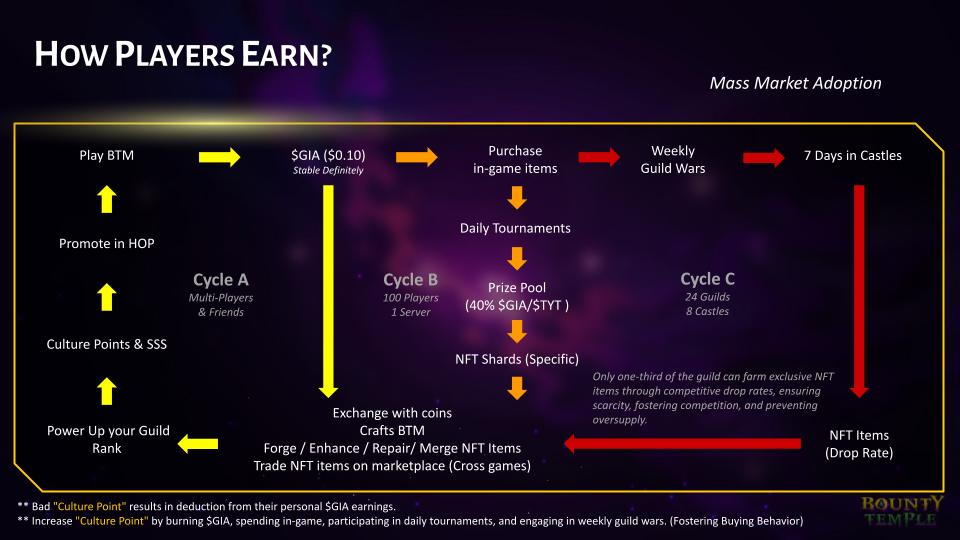
Crafting, Royalties, and BTM Bloodlines
At the center of Bounty Temple’s NFT economy is the Kraken Box and K-Rune system. K-Runes are used to craft BTMs, which are the game’s core playable NFTs. Each crafted BTM carries a digital DNA signature, and any future BTMs derived from it will generate a 1% royalty to the original crafter.
This means that early participants can earn passive income through what the team calls a “bloodline volume” system. If a player crafts a successful BTM lineage that sees high trading volume, the creator earns a cut of every sale tied to that DNA.
“One crafter could eventually earn hundreds of thousands in passive rewards if their BTM line is active and in-demand,” they said.
What’s Playable Right Now
The team is preparing to launch a web version of the game on Polygon following a closed beta, crafting event, and marketplace rollout. Staking and additional NFT systems are going live in phases throughout the summer. A public beta test is also accepting signups, with incentives for early players and K-Rune holders.
Mobile versions for iOS and Android are expected by the end of 2025. After that, the team plans to expand the P2E-Evolution model into additional games using the same stable economy and governance layer powered by $TYT.


